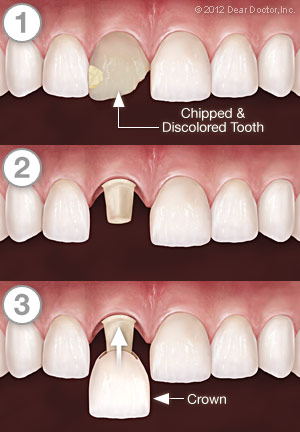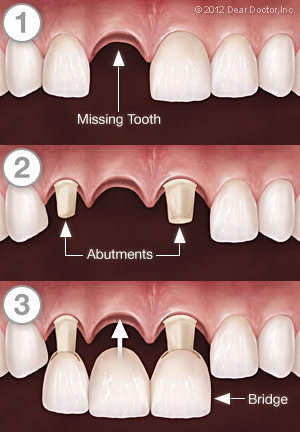Cosmetic Crowns

Coast Dental offers a number of options to restore teeth that have been damaged or lost. Your dentist can determine which ones best meet your needs.
Crowns strengthen damaged teeth, allowing them to function normally again. Porcelain crowns like Zirconia crowns are virtually indistinguishable from natural teeth. There are other materials besides porcelain that can be used to make dental crowns, such as all-metal crowns or porcelain-fused-to-metal crowns (PFM). Our dentists would be happy to discuss the pros and cons of these various options with you.
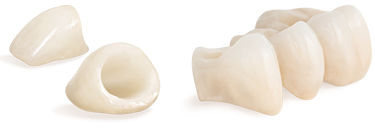
Dental Crowns and Bridgework. Chances are you talk to people who have crowns or bridgework every single day and don’t even realize it. Dental crowns and bridges are designed to look just like your natural teeth and are of the most common ways to restore a single tooth or several teeth. It’s easiest to think of a crown as a “cap” that fits over a damaged, decayed, or unattractive tooth, completely covering the tooth above the gum line. This is different from a veneer, which covers only a tooth’s front surface and needs natural tooth structure to support it. If a tooth is missing a significant amount of structure above the gum line, a crown is the restoration of choice.
Crown and Bridge Options
Metal fused to porcelain (PFM)
- Can be made of non precious cast metal such as cobalt chromium or silver and gold fussed to porcelain
- Less cosmetically appealing with possible unsightly grey lines at the gums
- Requires more tooth structure to be removed
- Makes the gums more vulnerable to decay and inflammation with metal allergies
- Porcelain may fracture or chip from the metal
- Insurance Copay Applies*
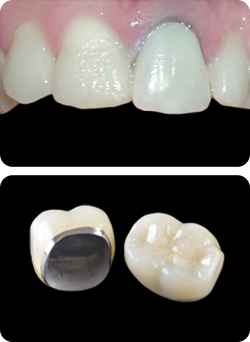
Zirconia
(Recommended for Back/Posterior and Front/Anterior Teeth)
- Metal free and best option for all anterior and molar teeth
- Natural translucency for a realistic appearance
- Milled from a single block of crystal (no metal)
- Less bulky and requires minimal removal of natural tooth structure
- 5 times stronger than metal fused to porcelain
- Matches the natural look of your teeth almost perfectly
- Insurance Copay and additional fee applies*
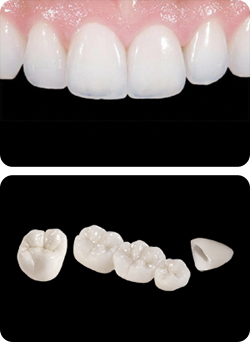
e-Max
(Recommended for Front/Anterior Teeth)
- Metal-free and best cosmetic option for front teeth
- Made from quartz (a strong glass ceramic)
- Less bulky and requires minimal removal of natural tooth structure
- Ideal blend of translucency and lifelike appearance
- Excellent blend of esthetic, durability and strength
- Resistant to fractures and chipping
- Insurance Copay and additional fee applies*
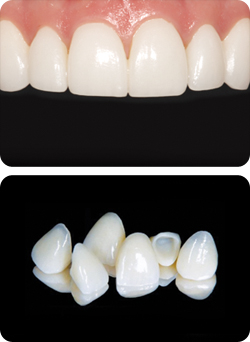
* For zirconia and Emax, Insurance Copay and additional fee applies.
Crowning or Capping a Tooth
Crowning or capping a tooth usually takes at least two visits. At the first visit, we will prepare your tooth to receive its new crown. First we will shape it to fit inside the new covering. This will involve some drilling to give the tooth a uniform shape. We will numb the tooth and the surrounding area beforehand. If you have very little tooth structure to begin with, we may have to build up the tooth with filling material, rather than remove tooth structure, to support the crown. This is commonly referred to as a core build-up.
After the tooth is prepared, we will take impressions of your teeth with reliable, putty-like impression materials, and send them to the dental laboratory. There, the impressions will be used to make models of your teeth for the creation of the new crown. The models will serve as guides to the highly-skilled lab technicians who will ensure that your new crown is designed to enhance your smile and function will within your bite. Before you leave the office, we will attach a temporary crown to your tooth to protect it until the permanent crown is ready. At another visit, your permanent crown will be attached to your tooth with either a resin that hardens when exposed to a special light source, or a type of permanent cement.
Creating a Bridge
Crowns can also be used to create a realistic replacement for a missing tooth. This is done with bridgework, which spans the space of the missing tooth and requires at least three crowns. Two of those crowns will be placed over healthy teeth on either side of the missing tooth; these healthy teeth are called abutment teeth. The two crowned abutment teeth become supports for a third crown placed in between; that third crown is called a pontic. If more than one tooth is missing, more crowns will be needed to bridge the gap between the abutment teeth.
The number of abutment teeth necessary to replace missing teeth is determined by the number of missing teeth, the size and length of the abutment tooth roots, the amount of bone support each abutment tooth has, as well as where in the mouth the missing tooth is located. For example, if you have three missing teeth, four abutment teeth may be necessary, thereby creating a seven-tooth bridge. Your dentist will determine the type of bridge you need to achieve a beautiful and healthy smile.
Caring for Your Crowns & Bridgework
Just as you do with natural teeth, you’ll need to be sure to brush and floss your crowns and bridgework every day to reduce the buildup of dental plaque. Avoid using your teeth to open packages or to break thread, and if you grind your teeth, you may want to invest in a nightguard to protect your dental work. Coast Dental is proud to provide a warranty for all crown and bridge work by any of our dentists. However, the warranty coverage requires regular scheduled visits and compliance. Please ask us for details. Together, we’ll make sure your crowns and bridgework last a long time.
Related Articles:
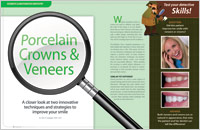
Porcelain Crowns & Veneers
Dear Doctor magazine examines two innovative strategies for improving your smile. In many instances, these two restorative techniques can produce nearly identical aesthetic results, even though they are designed differently for handling different structural problems...
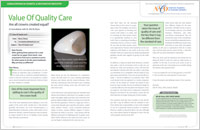
Value Of Quality Care
Are all crowns created equal? And why are some crowns more expensive than others? Crown fabrication costs depend upon the materials used and the time needed to create them, among other factors. Dear Doctor magazine examines these variables...
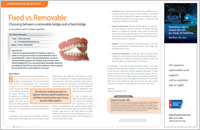
Fixed vs. Removable Bridgework
For those patients who have lost all their teeth, but have not lost significant bone, a fixed bridge (permanent non-removable teeth) may be the treatment of choice. For those who have severe bone loss, an implant-supported overdenture offers significant advantages...
